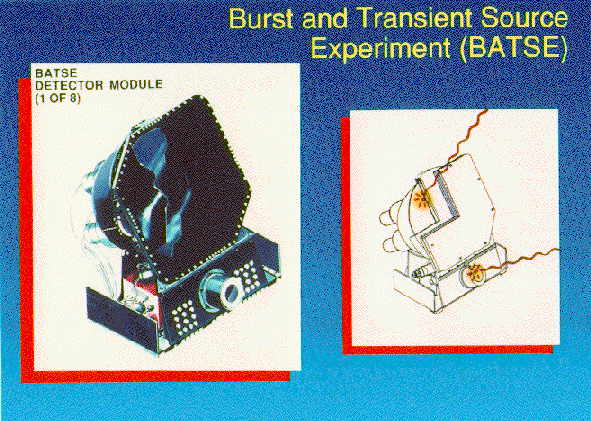The Burst And Transient Source Experiment (BATSE)

Click image for larger view
The Burst And Transient Source Experiment (BATSE) serves as the all-sky monitor for the Compton Observatory, detecting and locating strong transient sources called gamma-ray bursts as well as outbursts from other sources over the entire sky. There are eight BATSE detectors, one facing outward from each corner of the satellite, which are sensitive to gamma-ray energies from 20 keV to over one thousand keV.
At the heart of the BATSE detectors are NaI crystals which produce a flash of visible light when struck by gamma rays. The flashes are recorded by light-sensitive detectors whose output signal is digitized and analyzed to determine the arrival time and energy of the gamma ray which caused the flash. Each BATSE detector unit consists of a large area detector sensitive to faint transient events along with a smaller detector optimized for spectroscopic studies of bright events.
If you have a question about CGRO, please contact us via the Feedback form.

